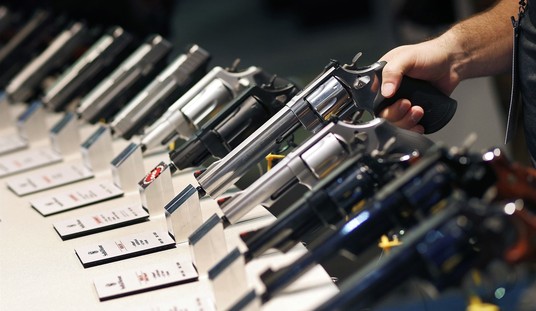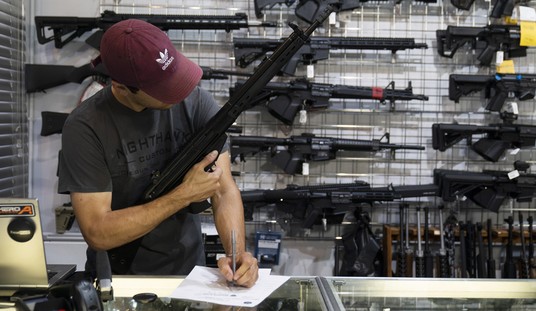Sponsored by NRA-ILA
It is one of the most well-worn tactics of those who advocate for gun control. Step one, acquire statistics on firearms injuries among children ages 0-14. Step two, combine these relatively low numbers with the far greater numbers of firearms injuries involving juveniles and young adults ages 15-19. Step three, present the resulting statistics as the shocking number of “children” (ages 0-19) who are subjected to “gun violence” each day/week/month/year. Step four, use the disingenuous statistics to advocate for handgun bans/registration and licensing/storage restrictions.
This week’s iteration of this ploy comes courtesy of a team of researchers who presented their work at the 2017 Pediatric Academic Societies Meeting, held May 6-9 in San Francisco, Calif. Titled, “Pediatric Hospitalizations due to Firearm Injuries in the U.S. in 2012,” the chief conclusion of the report is the researchers’ contention that 16 children are hospitalized each day for firearms injuries. The researchers relied on data from the U.S. Department of Health & Human Services’ Kids’ Inpatient Database (KID), which tracks pediatric hospitalizations.
An eager media trumpeted the research far and wide. CNN ran the headline, “16 US children hospitalized with gunshot wounds each day, study says.” WebMD reported, “Guns Send About 16 Kids to the Hospital Every Day.” Similarly, CBS’s Philadelphia affiliate blared, “16 Kids Hospitalized Each Day For Gun Injuries, Study Finds.”
The 16 “children” a day statistic was widely disseminated by an uncritical press, but a deeper look at the abstract reveals how the researchers concocted this alarming factoid.
Juveniles and young adults ages 15-19 comprised an overwhelming 83.6 percent of the “children” hospitalized with firearm injuries in 2012. Moreover, two-thirds of the injuries sustained by the individuals in this age group were the result of an assault.
Such findings might lead a rational individual to advocate for reforms to our juvenile and adult criminal justice systems. However, the abstract’s lead author, Alyssa H. Silver, has made clear that her main goal is to prevent unintentional firearms injuries among children by attacking gun ownership. In a press release, Silver stated, “Our findings add urgency to the need for preventive public health measures to reduce gun injuries in children,” adding that the research “highlights the need for improved gun safety and storage practices.”
Further, the abstract fails to put the unintentional firearms injuries Silver laments into the proper context. To their credit, CNN’s article made clear that the number of firearm injuries observed by the researchers for 2012 was roughly 20 percent lower than earlier research that used KID data from 2009. However, the article portrays Silver as dismissive of this decrease, with the researcher telling the news outlet “I think most people would agree one child being shot is too many.”
Obviously, no one wants a single child to be injured with a firearm, but Silver’s flippant remark ignores the vast progress made in preventing unintentional firearms injuries among children. The unmistakable trend revealed by data from the Centers for Disease Control is that unintentional fatal firearms injuries among children have been falling for decades, as the number of privately owned firearms has increased.
CDC data shows that in 2015, the total number and rate of unintentional firearms deaths among those ages 0-14 were tied for the lowest observed since 1981 (the earliest year for which such data is available in CDC’s WISQARS database). The rate of unintentional firearms deaths among those ages 0-14 in 2015 was less than a third of what it was in 1995, and less than a sixth of what it was in 1981. In 2015, the CDC recorded 48 unintentional firearm deaths among those ages 0-14. This a tragedy to be certain, but it is an average of .13 such deaths per day. With an estimated population of 61 million between the ages of 0-14, the likelihood of a child dying from an unintentional firearm injury is less than 1 in a million.
Conflating firearms injuries among actual children with those suffered by juveniles and young adults for political gain or notoriety has been a staple of gun control politics for over a quarter-century. While some of the less dishonest gun control groups have been shamed into changing their messaging to more accurately reflect their use of the 0-19 demographic, brazenly dishonest characterizations of firearm injuries among “children” persist. Given this record of deceit, gun owners must view any attempt to leverage our natural concern for children against our rights with the utmost skepticism.








Join the conversation as a VIP Member